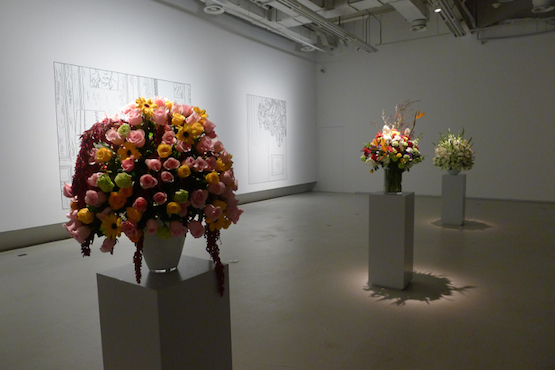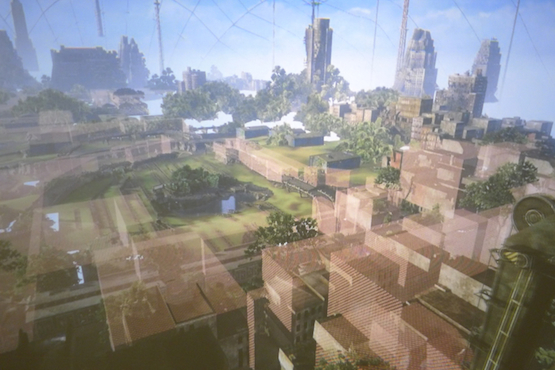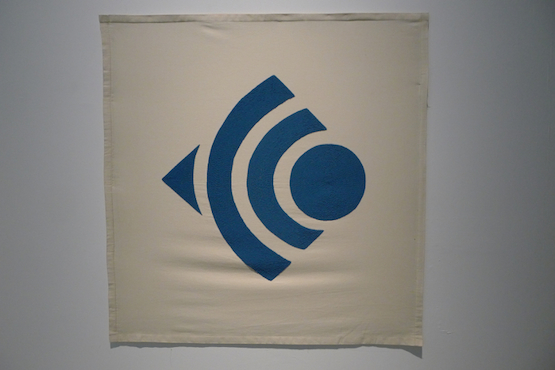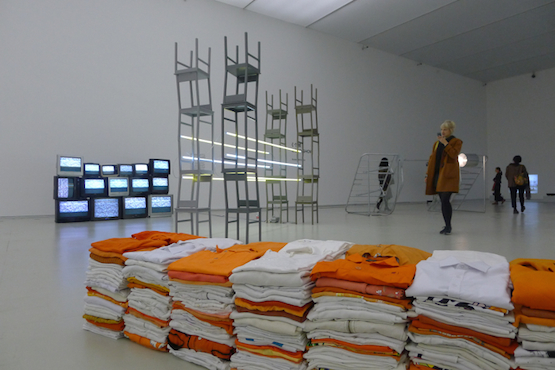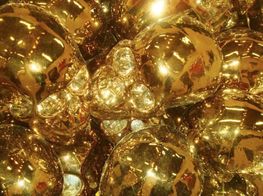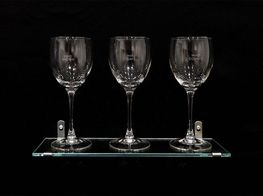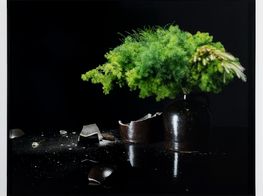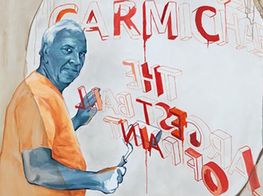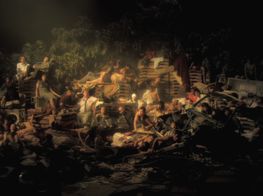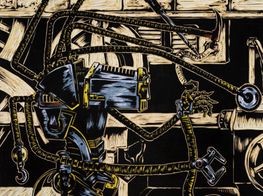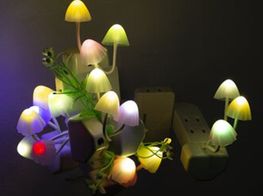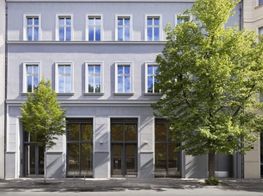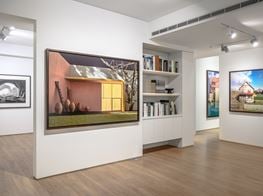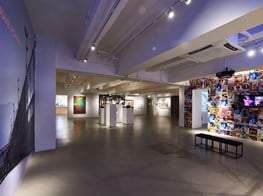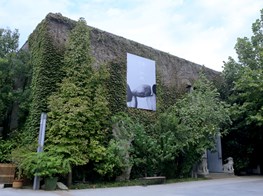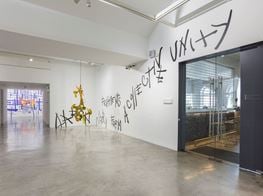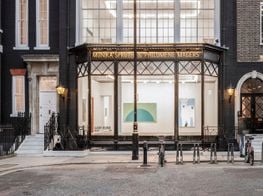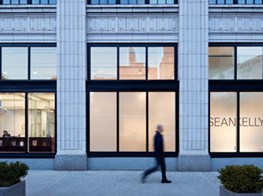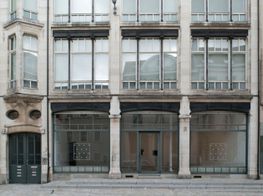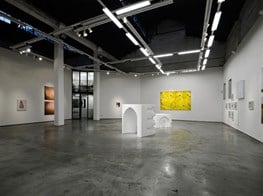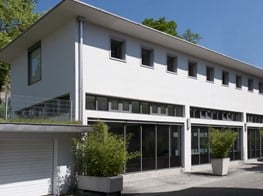Ocula Report: The Tenth Shanghai Biennale
Biennials are inherently messy. Gathering hundreds of pieces by international artists working in different mediums creates an exponential number of echoes and dissonances. Their messiness differs, though, in kind and degree, as exemplified in recent Shanghai Biennales.
In 2012, chief curator Qiu Zhijie’s themes for the Ninth Shanghai Biennale filled half a dozen large-format, Tolkien-esque maps he created to explain his vision. The event was as sprawling in physical space as it was in concept, with works spilling out of the 31,000-square-metre Power Station of Art into over 30 city pavilions on and around East Nanjing Road.
Qiu’s biennale, “Reactivation”, included spectacular works such as Huang Yong Ping’s 18-metre-tall cast iron tower, Thousand Hands Kuanyin, a pile of silicone fingers by Han Zijian, and Wang Yuyang’s cascading feather fall of lit fluorescent tubes. Colorful and polyphonic, the exhibition was less of an argument or a line of enquiry than an overclocking of individual artistic energies. Taken as a whole, it was crammed and chaotic but exuberant.
The 2014 Shanghai Biennale, entitled “Social Factory”, is more thoroughly thought out, emptier, and dominated by a grim, industrial grey. Even one of the more colorful works, Willem de Rooij’s Bouquet IV, features bright arrangements of flowers that are reflected in an accompanying monochrome photograph that evidences the narrow range of middle greys those hues inhabit, eschewing extremes of brightness and darkness.
Willem de Rooji, Bouquets, 2006-10. Mixed media
When we interviewed chief curator Anselm Franke a week before the opening, he derided the “wow” experience, as a limited and often limiting aesthetic response. To be wowed is to be rendered speechless, an emptying of the mouth and mind that may never result in any deeper contemplation. Qiu’s biennale wowed, while this biennale more often elicits the thought “that’s interesting”, a stalling tactic we use when we encounter new propositions for which we’ve not yet formed opinions.
Though organised and conceptually consistent, “Social Factory” is nevertheless messy, at times literally so. Dust seeps from bags mounted on the walls, piling up on the museum floor, in a work by Mona Vatamanu and Florin Tudor. Erik Steinbrecher’s World Ocean slowly but deliberately leaks water in the ground floor foyer. Sugar crystals colonize soggy cardboard boxes in Edgar Arceneaux’s The Algorithm Doesn’t Love You: From Detroit to Shanghai.
Erik Steinbrecher, World Ocean, 2014
These and other works give the sense that something is broken, and that art is a necessary diagnostic tool at the help desk of social progress. Franke quotes Sun Fuxi in the exhibition catalog saying that “[artists] are the voice and vision of society, and will express emotions that society cannot express.”
These kinds of inexpressible expressions, which problematise and challenge dominant narratives—political, commercial, etc—are an even more pervasive and important kind of mess in “Social Factory”. While Franke acknowledges Shanghai’s place in moving China from the “world’s factory” to a “social factory”, he wants more thought and conversation to inform and shape that process. To this end, he nurtures a little chaos, hands cupped around a weak flame of anarchy.
The word fact meant ‘something done’ before it ever meant ‘a truth’. In a “social factory” we manufacture facts (values, behaviors, identities, etc), which are not really facts at all but socially constructed and contestable, and thus open to artistic interpretation and critique. The subjectivity of facts is thrown into relief by the first work a visitor encounters inside the Power Station of Art, Peter Ablinger’s robo-piano. The work is wired to ‘speak’ the phrase “seek truth from facts”, which was favored by Mao Zedong and revived by Deng Xiaoping.
Like the robo-piano, existing between voice and music, between truth and fact, many of the works included in the exhibition identify, stretch and permeate boundaries. Harun Farocki’s Parallel II is a video that explores the architectural limits of computer games. Even immersive, sandbox style games that market themselves on their limitless possibilities are constrained, something Farocki highlights by superimposing digital mesh fences in the worlds where the playable areas end.
Harun Farocki, Parallel II, 2014. Video
Li Xiaofei does something analogous in his Assembly Line Project: Unknown Facets, recreating in ineffective fiberglass the oversized concrete jumping jacks used to diffuse waves and protect shorelines, efforts to redefine divisions between land and sea.
The ocean is a prevalent theme in the biennale’s film selection, curated by Hila Peleg, which includes nine works showing in three mini theaters. Among these are Leviathan by Verena Paravel and Lucien Castaing-Taylor, which follows a ground fish trawler in the North American Sea, and Ko Sakai and Ryusuke Yamaguchi’s conversations with residents of Tohoku, northern Japan, which was hit heavily by an earthquake and tsunami in March 2011.
One of the most interesting films is CAMP’s From Gulf to Gulf to Gulf in which sailors in home made boats traverse the Western Indian Ocean from Pakistan to southern Iran. The film makes use of footage shot by the sailors themselves, collected over a four year period, and spliced with their favorite Bollywood and religious songs.
As well as examining physical boundaries, “Social Factory” pushes genre boundaries, including not just works of sound art such as Ablinger’s but the even more marginal noise art. According to Franke, waxing anarchic, “noise threatens to erode hegemonic meaning, which relies on the authority of the signifier. How is such an empire of meaning maintained, if not by permanently sorting signals from noise, and thus guarding its terrain of authority?”
Noise usefully complicates the reductive data sets and hummable preconceived notions that lead to poor, often exclusionary governance. There’s admirable punk spirit to Yan Jun’s Noise Hypnotizing, recordings of sounds made with typical household items and used to create feedback. It’s a good conceptual fit for the biennale, but a horrible, tedious work. I saw people throw their headphones off after just a few seconds. A more successful sound work is Liu Ding’s 1999 Phones, an installation of 30 phones mounted on totems that play quotes from people in the Chinese art world recorded in 1999. The land line phones themselves, already an anachronism, testify to how much has changed.
In introducing the biennale Franke has talked about how postmodern artists have bargained off their consequentially in exchange for freedom, and noise art seems a case in point. But the biennale also presents artwork from a time when it was socially consequential. The Chinese woodcut movement, which began in Shanghai in the 1920s, allowed for reproductions of politically motivated artworks to be distributed widely and cheaply to a popular audience. A broad selection of woodcuts is displayed, including Li Hua’s bound man Roar, China! and Zhao Yannian’s illustrations of The Story of Ah Q, author Lu Xun’s critique of China’s national character, written in 1921.
Zhao Yannian, The Story of Ah Q, 1978-94. Woodcut illustrationsOne of the more overtly political contemporary works is Nadia Myre’s Journey of the Seventh Fire, which consists of generic corporate logos suggestive of those used by mining and hydro companies in her native Canada but rendered in the beadwork of the Anishinaabe Aborigines. The “Seven Fires” of the work’s title are an ancient tribal prophecy that anticipates the tribe’s current state of crisis and marginalisation.
Nadia Myre, Journey of the Seventh Fire - Cameco, 2008. Beads on canvas
The same way Myre appropriates corporate logos, Art and Language appropriates nation states’ flags in their work Flags for Organizations. The blue, yellow, green and orange flags—rare splashes of color on the ground floor of the museum—are accompanied by the manifestos for fictitious organisations, axioms such as “That Western society is based upon envy engendered by publicity”. Though imperfect, these manifestos assert clear moral and philosophical perspectives that countries cannot. Two people are yet to give the same definition of “The Chinese Dream”.
Another fiction, Natascha Sadr Haghighian’s Robbie Williams Solo Show, is employed as a critique of contemporary art making in one of the biennale’s largest works. Sadr Haghighian hired Uwe Scharzer of art production studio Mixedmedia Berlin to create generic contemporary art works, neither good nor bad. The resulting exhibition is a series of obstacles that vaguely resemble showjumping fences. The show (and it’s all show) is accompanied by the following absurd text, worth quoting in full.
Natascha Sadr Haghighian, Robbie Williams Solo Show, 2008-14. Mixed Media
"The work of Stockholm-based Egyptian-Taiwanese artist, Robbie Williams manifests itself across a wide range of materials. Williams’ hybrid sculptures evoke questions surrounding the conditions of the individual in representational spaces and reflect on what shapes our daily lives. on the occasion of SOLO SHOW, the artist displays a set of five objects that resemble obstacles for horses arranged in the space as if for a show-jumping contest. the objects are loosely assembled, and would collapse in the same way as a fence when hit by a leaping horse. But instead of using wood, Williams has chosen materials that refer to his own biography and playfully quote from the history of modern and postmodern art."
These are art works that literally and conceptually collapse at the slightest touch. An accompanying eight channel ring of speakers creates the impression of being circled by a running horse, giving the listener the run around. This is Franke’s biennial at its biting, kicking best.
Edgar Arceneaux’s aforementioned The Algorithm Doesn’t Love You: From Detroit to Shanghai, is another highlight. The public institutions that have so much influence over especially poor people’s lives are remade as gods with names like “EDCAITUON” and “PUILBC SIVEERCS”.
Edgar Arceneaux, The Gods of Detroit (MUUESMS ADN LIBRARIES), from The Algorithm Doesn't Love You: From Detroit to Shanghai, 2010. Mixed media on canvasMany of the most sardonic, provocative works are created by foreign artists. Some might see this as a function of Franke being the first foreigner to fill the role of Chief Curator for the Shanghai Biennale, but his co-curators Freya Chou (Taiwan), Cosmin Costinas (Hong Kong) and Liu Xiao (Beijing) do have ample experience in the region.
The real problem is that Franke sees the art museum as a place for the critique of prevailing social structures, privileging works that are messy and difficult and problematise the underpinnings of so many of our endeavors, including their financial underpinnings. Shanghai had five distinct art fairs this past autumn reminding us that artworks that wow sell better than those that are only, but importantly, interesting.—[O]

